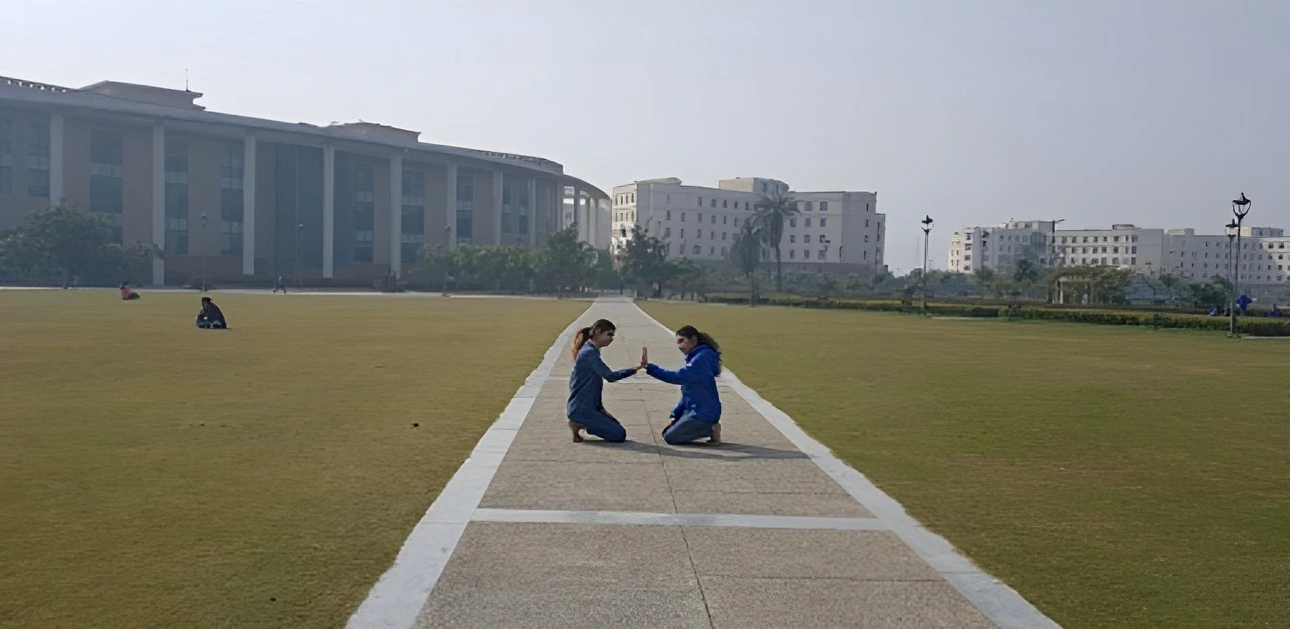Researching the Blocks of Sustainability: Modern Buildings

Editorial / September 02, 2024
Contemporary buildings with all the amenities are not just inert structures to live, but also are statements of human progress.
However, the present levels of energy consumption in maintaining them as comfortable human habitats remains the dark side of the otherwise elegant solution to human need for shelter. Recalibrating the usage of energy (electricity) in the buildings to achieve national energy targets is the primary purpose of the research being carried out by Dr. Ghanshyam Pal, Associate Professor, School of Engineering.
Rapid urbanization in India has led to an insatiable demand for modern housing and offices. On a global scale, these buildings are responsible for about one-third of total energy consumption and energy and process-related carbon emissions.
In 2022-23, 25.8% of the total generated electricity (13,16,765 GWh) was consumed by the domestic sector in India. The alarming pace of energy demands by the residential and commercial buildings sector points us to the pressing need to improve the energy efficiency of buildings to promote sustained growth and energy security.
To address the issue of inefficient cooling (or heating) of buildings, Dr. Pal is working on phase change materials (PCM) based systems as the passive means to achieve improved building energy performance. The nano-enhanced phase change material system he has developed using organic PCM, biopolymers and industrial by-products ensures that the buildings remain relatively cooler during summer, thus reducing the electricity consumption and resulting capital expenditure incurred in maintaining the required levels of thermal comfort.
To improve the energy efficiency of buildings, the candidate PCM is selected in such a way that its phase change temperature (generally, “solid to liquid” PCM transformation) lies within the average daily temperature range experienced by the buildings. When such engineered PCM-based systems are applied to the building envelopes, a part of the absorbed solar heat energy is spent in the phase change process of PCM, and, thus, a reduced amount of heat remains available to heat up the building envelope. Thus, the incorporation of phase change materials (PCM) in buildings could reduce the electricity consumption in running the building cooling systems.
“PCM-based systems for buildings have been successfully developed by researchers in the West for energy efficiency applications. They have optimized it for cold weather regions of Europe and North America, and therefore cannot be directly implemented in India due to the vast difference between the two weather conditions. We, in India, have different weather conditions (hot weather), so the solutions we seek need to be customized as per our needs,” says Dr. Pal.
Working at the university’s Advanced Materials and Building Energy (AMBE) Lab, Dr. Pal says that his passion for developing sustainable building solutions for the economically weaker section (EWS) housing has been the fundamental driving force behind his research work. The lab, besides receiving a grant of Rs 92.2 lakhs from the Government of India’s Department of Science and Technology, has been the hub for research by UG and PhD students. Currently, the research team at AMBE lab comprises Dr. Pal and his 3 PhD students.
According to an estimate, India’s total building floor area will be around 57.6 billion square meters by 2050 from 17.3 billion in 2024. This growth in the domestic sector is expected to drive an unprecedented energy demand hike. Therefore, in order to ensure the energy security of the nation, it is important that future buildings are constructed using highly energy-efficient material systems and methods.
Keeping with the university’s untiring efforts on sustainability, Dr. Pal’s research is directly connected to SDG 7 (Clean Energy), SDG 11 (Sustainable Cities and Communities) and SDG 9 (Innovation and Infrastructure).
More Blogs

The Hawthornden Literary Retreat bestowed on Dr Sambudha Sen to complete the manuscript of a novel
Professor Sambudha Sen, Head of the Department of English at Shiv Nadar Institution of Eminence, Delhi-NCR, was awarded a residency at the...

The Power of the Moving Body
Movement is an innate bodily action that humans have been exhibiting for the longest time. Long before language was invented, the body was the...

How Does A Multi-Disciplinary Approach To Education Enhance Learning And Prepare Students For A Multi-Faceted World?
In today’s world, where businesses are changing almost every day, it is the responsibility of educational institutes to provide holistic...